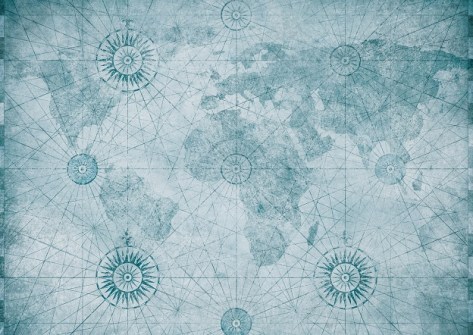
This article was first published in Issue 126 (Aug/Sep 2023) of Position magazine.
Geospatial is more than an industry — it is a phenomenon that can change the world, argues Woolpert’s Joe Seppi.
By Joseph Seppi, Geospatial Sector Leader, Senior Vice President, Woolpert.
Geospatial practitioners often struggle to articulate their trade. There is that awkward use of the word ‘geospatial’ as an adjective, used to modify any number of nouns like ‘industry,’ ‘market,’ ‘profession,’ ‘ecosystem’ or ‘community’. It can be confusing.
When asked, “What do you do?” the geospatial practitioner will often say “I make maps”. This is easy to understand for most. But the real answer is difficult to articulate, complex and even unclear — because geospatial is like that.
Thirty years ago, it was not so difficult. There were a few clear answers, such as cartographer, photogrammetrist, geodesist or surveyor. Scientists and engineers, who routinely sketched and drafted maps of all scales, used fundamental principles of cartography.
In 1989, the famous landscape architect Ian McHarg, known for his pioneering work in the environmental movement, was using an early form of GIS — maps drafted on acetate drawn with Rapidograph ink pens to perform map overlay analyses. Then his students learnt CADD and early versions of GIS software. For him and his students at the University of Pennsylvania, GIS was a tool, a means to an end, but the data and the analyses were the focus of his ecological planning methodology.
Back then, GIS was this incredibly powerful new tool, but there was very little digital data around. Most of what was needed was on paper or non-existent. If one wanted good, accurate mapping, they had to get out in the field and survey or digitise. Landsat data was on the scene, but its course resolution was not useful for many applications. Analog photogrammetry had been around since the early 20th century, and it too was undergoing a digital transformation around that time to soft-copy techniques.
GIS software quickly became the star of the show, and for a while many former cartographers, photogrammetrists, surveyors, geologists, statisticians and so on became known as the ‘the GIS person,’ as demand for those software user skills skyrocketed. It did not last long, and by the turn of the century there were four-year degrees being offered in GIS, and the realisation by many that being known as the ‘the GIS person’ was not a great career choice.
Then the word ‘geospatial,’ the adjective, took off. The GIS person could be called the Geospatial Analyst, Architect, Technician, Developer, Manager, Visioneer or whatever. One result of this gold rush was the abandonment of core curricula, skills training and general appreciation of core competencies. Now the average age of a professional surveyor in the US is 57.
It is difficult to pinpoint the first usage of the term ‘geospatial industry’. This term has been prevalent for several years. By most definitions, an industry consists of establishments that offer products and services. Geospatial doesn’t fit nicely into an industry, or even an industrial sector. In fact, geospatial is not listed in the North American (NAICS) or the Australian and New Zealand Industrial Classification (ANZSIC) systems — the word ‘geospatial’ doesn’t even appear.
The same can be said for the EU classification of Economic Activities (NACE) — which groups aerial photography in the same industry as ‘videotaping of weddings’ — the UK Standard Industrial Classification (SIC), and even the United Nations International Standard Industrial Classification of All Economic Activities (ISIC Revision 4). Mapping and surveying are clearly identified as industries, often with professional services sectors.
What many call the ‘geospatial industry’ is the overlapping marketplace of many industries.
The state of geospatial today
There are people working in geospatial today who have never used or even held a paper map in their hands. So much of what geospatial practitioners do depends on emergent technologies, and sometimes that technology depends on the practitioners.
Credit is due to geospatial (as a noun) and its origins in the scientific and government domains, now found in just about every industry with varying levels of maturity. Maps and cartographers have given way to digital twins and data scientists. Photogrammetry has evolved into computer vision and deep learning. National Map Accuracy Standards and Spatial Data Infrastructure have become parts of ambitious globalist initiatives such as the ‘Geospatial Knowledge Infrastructure’.

Because everything has a location, geospatial believes it can do just about anything. Geospatial is now on a crusade to save the world from climate change and social injustice. Are geospatial organisations and practitioners really going to solve these problems or are they just being opportunistic? There are many screwdrivers out there trying to turn the same screw. In the meantime, surveyors, geologists, oceanographers, climatologists, engineers, planners and others tackle these problems with rigour, using appropriate technology. They are focused on the problem, not the tool.
Still on the books today in many countries are laws and policies clearly requiring licensed professionals to be the official mapmakers. Unfortunately, industrial ambiguity and the rapid emergence of competition with lower barriers to entry, led to lower standards for accuracy and changing government acquisition postures and reduced demand for licensed professionals.
Geospatial is in a state of high entropy. Estimates about the size of the Geospatial Industry are all over the place ranging from US$70 billion to US$1 trillion.
To Silicon Valley, “Geospatial feels like a sleepy industry that is waking up to new realities of technology innovation, major competition and users who have never heard of it” (Adrakopolous, Shawn 2023). Silicon Valley and Wall Street don’t really know this ‘industry’ exists.
The changing role of geospatial data
At one point along geospatial’s rapid evolution the term ‘location intelligence’ was introduced. That term is one of the more appropriate. Everything in geospatial is about location, and location intelligence is all about measuring movement of people and things through space and time. Entire supply chains exist for this purpose. Geospatial data is paramount. The pace of discussion about AI, digital twins, the metaverse and even multiverses has been breathtaking. For these things to work they will need near real-time updates, with a steady supply of exquisite high-resolution geospatial data and location intelligence.
David Alexander, former GIO at the US Department of Homeland Security, gave a talk titled ‘Geospatial information as a utility’… explaining how it has generation, transmission, and distribution segments. He said that, like a utility, geospatial information “is a vital need, deemed by state and federal lawmakers to be in the public interest…” (Alexander, David 2017). And potentially regulated but not owned by government.
Geospatial needs a robust midstream market that will make data producers less dependent on government end-user revenues. Data-hungry AI start-ups, DaaS, SaaS and other managed services platforms, may be just what is needed to create a more robust, healthy market for geospatial data and information.
Geospatial is a phenomenon
Whatever those in geospatial call themselves, everything has a location, the Earth’s surface is constantly changing, even metaverses will constantly change, and soon there will be new markets for lunar and Martian spatial data. There are runways for growth of the technology, and hopefully practitioners will think about core principals and the value of science, mathematics and engineering.
A robust midstream marketplace for geospatial data will be good for geospatial and the consumer. Someday, there may be a real market for geospatial data, where it is bought and sold as a commodity, which would be potentially one great way to democratise it.
Geospatial is not an industry, at least not the way we tend to talk about it. Geospatial is mainly used an adjective. Used as a noun, this unique phenomenon carries its own gravity and could become more than an industry, or it might just come full circle.
This is an edited version of Joseph Seppi’s plenary address from the Locate23 conference.







